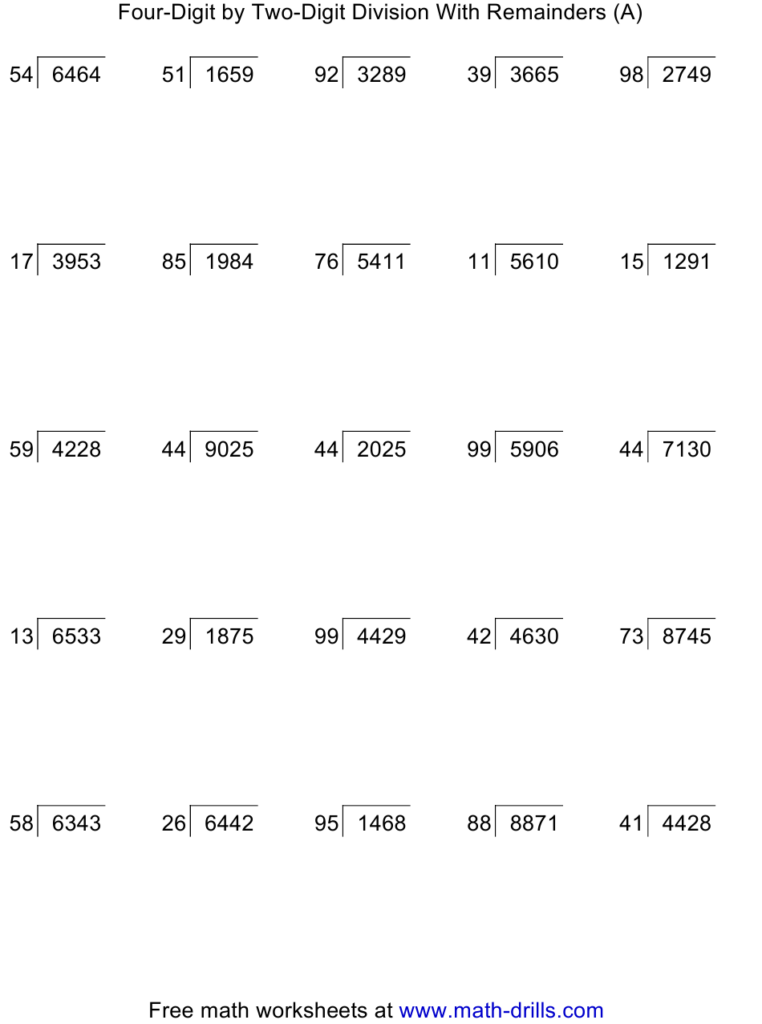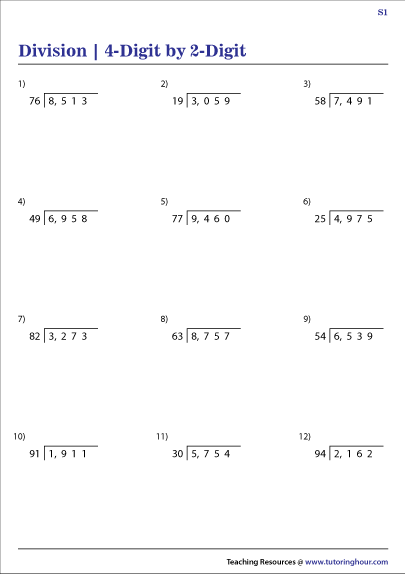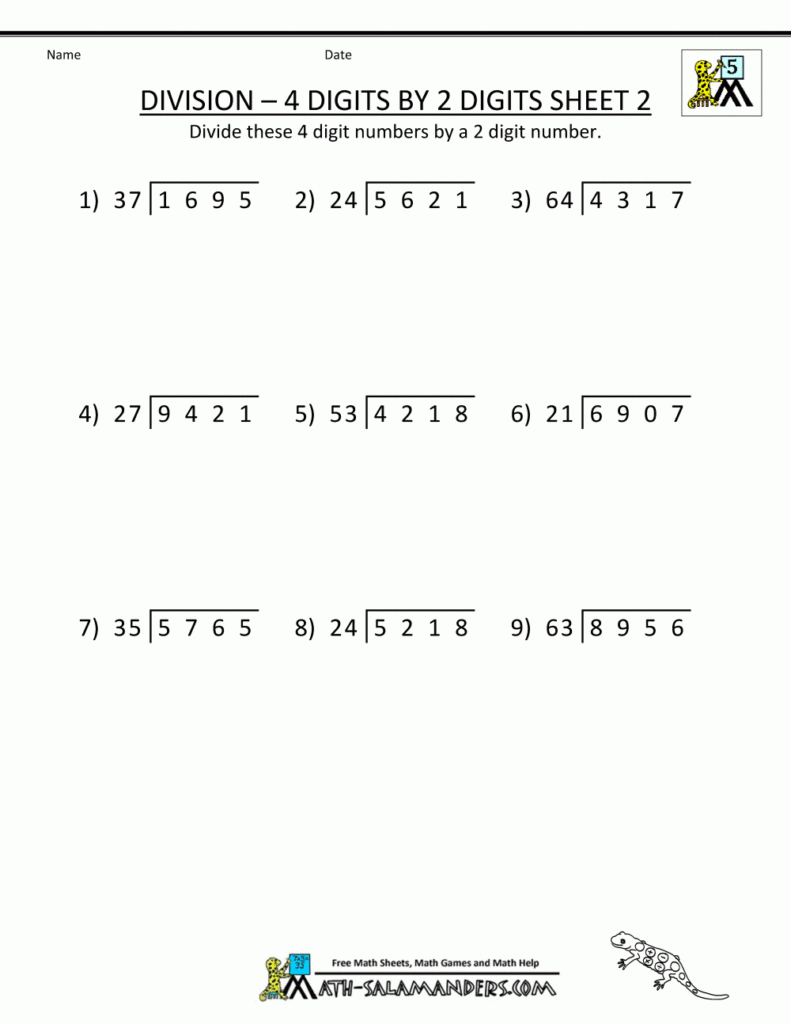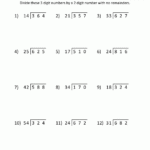4 Digit By 2 Digit Division Worksheets – Worksheets for division can be a fantastic way to practice math concepts. They’re a fantastic method to test math concepts and prepare yourself for the arithmetic test. Worksheets come in a wide variety of formats, including whole numbers and decimals.
entire numbers
Your youngster can have a firm grasp of the fundamental idea of doing mathematical calculations on whole numbers with an exercise on division of whole numbers. Worksheets on division of whole numbers can be used as homework assignments to practice and sharpen division skills in addition to aiding students in understanding the concept. These worksheets include illustrations and examples from the real world to illustrate the concepts.
Worksheets for division are available in various formats. This includes worksheets with many digits or long divisions. Multi-digit integers need to be divided by divisors. After that, students determine the quotient as and the remaining. Long division worksheets as a standard method.
Worksheets for splitting whole numbers into fractions are offered in addition to worksheets for dividing numbers traditionally. This is a fantastic method to increase students’ understanding and make the subject second to them.
Rule of Divisibility
Children are able to better understand the concept of divisibility using worksheets for division that contain divisibility rules. These worksheets keep children interested and aid them in solving division problems. These worksheets can also aid children in remembering and understanding the information more quickly.
In a worksheet on divisibility rules, children are required to determine the divisible numbers. These worksheets are designed to assist kids improve their decision-making abilities as well as fine motor skills. They assist children to track their progress and identify gaps in their knowledge.
Divide a number into its numbers to find out if it can be divided using a particular number. To determine whether a number can be divided by a specific number, it must be divided equally by its total number.
Fractional division
It’s a fantastic way to teach fractions to children using worksheets that help them split fractions. This activity can also be used to help students prepare for algebra in the later grades.
Students who struggle with fractional division usually face it in school. The problem lies in how confusing the concept can seem. Your child can stay clear of confusion by teaching worksheets on fraction division. These can be used by kids as a method to check their answers. Worksheets on division of fractions can make students feel more at ease in class.
You can use word problems, images or diagrams to aid you in splitting fractions. These worksheets are great to help students learn how to write mixed numbers fractions. They are available in a variety of difficulty levels. They are designed specifically for children who are in the 3rd to 6th grade.
Decimal division
Divide whole numbers or decimals are very similar to each other. There is no remainder in decimal subdivision. When you divide a decimal, the decimal position is shifted towards one side. You round both ways based on the number which follows the decimal point.
Before you can divide the decimal it is important to establish the quotient. The sum of the divisor as well as the divisor is referred to as decimal quotes. It could be a multiple or one integer, a multiple 10, or even 100.
In the majority of cases the decimal quotient an amount is then rounded up to a specific amount of decimal point. This is done by making use of trailing zeros. Since the dividend is worth 0.4 and the divisor is worth 4.88, for instance divising 48.8 by 4 would be decimal division.
To divide large numbers, use powers of ten.
Powers of ten is a basic concept that can be used to divide large numbers. No matter if you are splitting decimal numbers or whole numbers, you need to know how to modify the decimal points.
When splitting large numbers, it’s required to shift the decimal points as many times that there are zeros within a power of 10. Therefore, the initial number is reduced as the value increases. If the number is less than the decimal point, it will shift to the right. If the number is larger then it will shift to the left. If the number is smaller than one, the exponent will be reduced by the amount it moves.
The exponents must be subtracted within the divisor of these exponents. The scientific notation is






